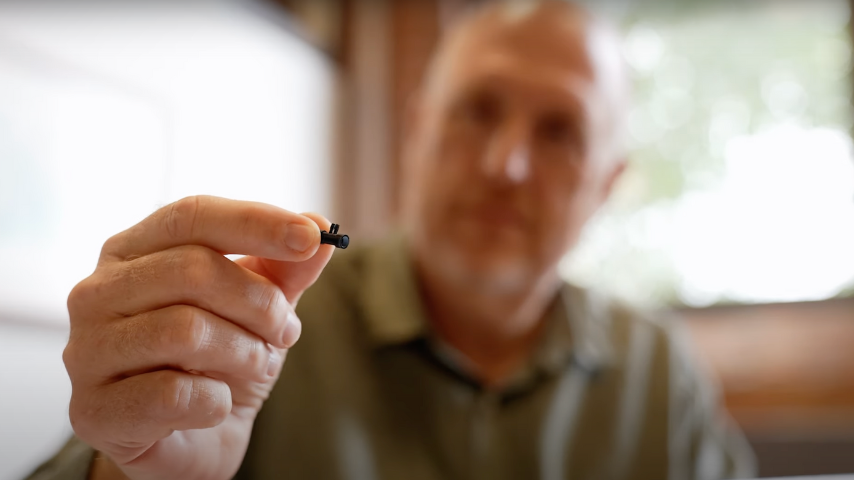Experts Discuss Advanced Manufacturing at Congress Keynote Event
Experts Discuss Advanced Manufacturing at Congress Keynote Event
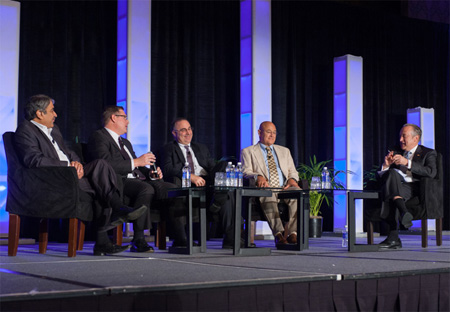
The Keynote Event at the 2013 ASME International Mechanical Engineering Congress and Exposition last month played to a packed house of nearly 1,000 people attending the Congress in San Diego. The session, titled "Advanced Manufacturing: Engaging the Nation and the World to Achieve Economic Prosperity," featured a panel of leaders in additive manufacturing describing the economic potential of emerging technologies, along with the regulatory and technical challenges that lay ahead. The keynote opened the daylong Advanced Manufacturing Impact Forum, which made its debut at this year's Congress.
After welcoming remarks from ASME President Madiha El Mehelmy Kotb, ASME Executive Director Thomas Loughlin kicked off the panel discussion by showing a short video, produced by ASME, about GE Aviation's aggressive plans to use 3D printing to manufacture a high-performance fuel nozzle.
Panelist Dave Ciscel, vice president of CalRAM, described the rapid adoption of 3D printing for a wide variety of products. "I first saw a manufacturing product made out of plastic, and I thought 'this is magic,'" said Ciscel, whose company uses 3D printing for small runs of parts for the aerospace, medical and other industries. "I started out thinking about repairing old airplanes, and I've come to realize that the digital revolution and the various forms of additive manufacturing have tremendous applications worldwide, and [that there are] plenty of opportunities for ASME."
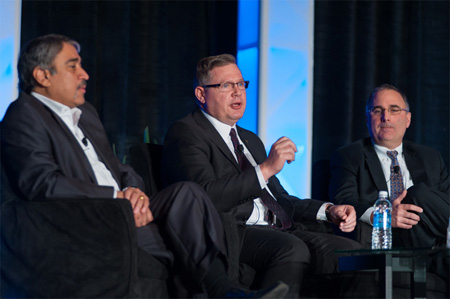
The panelists described different barriers to entry for additive manufacturing, depending on process, material and complexity. "When you look at some of the technologies like additive metals, the equipment costs are much higher and it's not just the equipment," said Greg Morris, strategy and business development lead for additive technologies at GE Aviation. "You have a tremendous amount of support that you need in order to effectively run those pieces of equipment. You need an upfront engineering design and CAD capability. Then you have the equipment itself and the knowhow and the capital required to purchase that. And then on the back end, generally speaking, you have to post-machine, post-finish, or post-inspect. All of those are very high capital equipment type of opportunities."
Pradeep K. Khosla, chancellor of the University of California, San Diego, described the economic potential of 3D printing at another end of the spectrum. "Imagine somebody wants to make costume jewelry in a little village in India, where they have no way of making a living," Khosla said. "You put a little 3D printing machine out there [for] a few thousand dollars, enabling this person to now make an income, raise a family, and have a better standard of living. So that's the democratization that I think is going to have a real impact. The whole 'makers' movement exits only because of 3D printing."
The panelists spoke of both strengths and weaknesses of the U.S pipeline for engineers and technical workers. "We have access to brilliant materials scientists," Ciscel said. "The academic world has done a magnificent job at the top level, at the intellectual level, the design engineers that we work with. [But] then we get to the people who have to work the machines. And I can't afford to pay them what I pay a Ph.D. metallurgist. But I need the right kind of person."
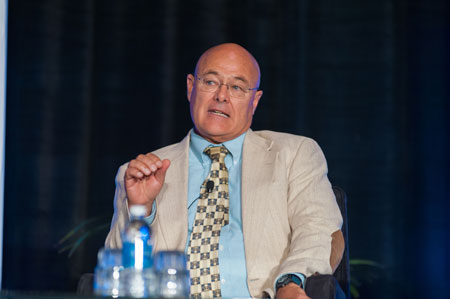
Mike Molnar, chief manufacturing officer at the National Institute of Standards & Technology, said even when academic and training programs are strong, advanced manufacturing and digital technologies require a change in perspective about education. "It's not just 'go to university or community college and get your degree and you are set,'" Molnar explained. He said working with advanced manufacturing requires a shift toward life-long learning and recognizing the need for broad-based solutions. "It's all about a systems approach. In the future, students, and especially engineers, have to be much more interdisciplinary."
Molnar went on to say that standards are very important as additive manufacturing matures. "The technology has advanced, the economics have fallen into place, [so] that serious manufacturers are talking about end- use products," Molnar explained. "Not only consumer products, but commercial, industrial products. It's a brand -new world in terms of standards."
All of the panelists spoke of the role ASME could play in the development of advanced manufacturing. Khosla said ASME could help develop course modules for use in all levels of engineering education, while Morris and Molnar spoke of ASME's role as a neutral party convener of knowledge.
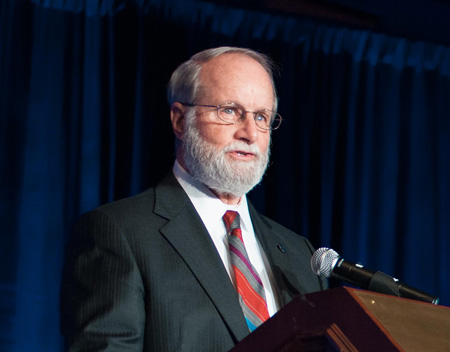
Morris also said that working together must sometimes trump competitive pressures to protect intellectual property. He cited an example that came up frequently during the discussion, sharing data on material characterization. "We need to collaborate perhaps with our competitors to some degree, and I think that organizations like ASME help to pull those forces together. I think we need to look at the greater good and come together to achieve more progress, faster, and with fewer resources."
"The magic here is convening," Molnar said. The value of private-public partnerships is that they bring people together to share ideas and learn from each other, he continued. "And that is one of the incredibly important roles for professional societies, not- for-profits. And no one does that quite so well as organizations such as ASME."
- Roger Torda, Public Information




